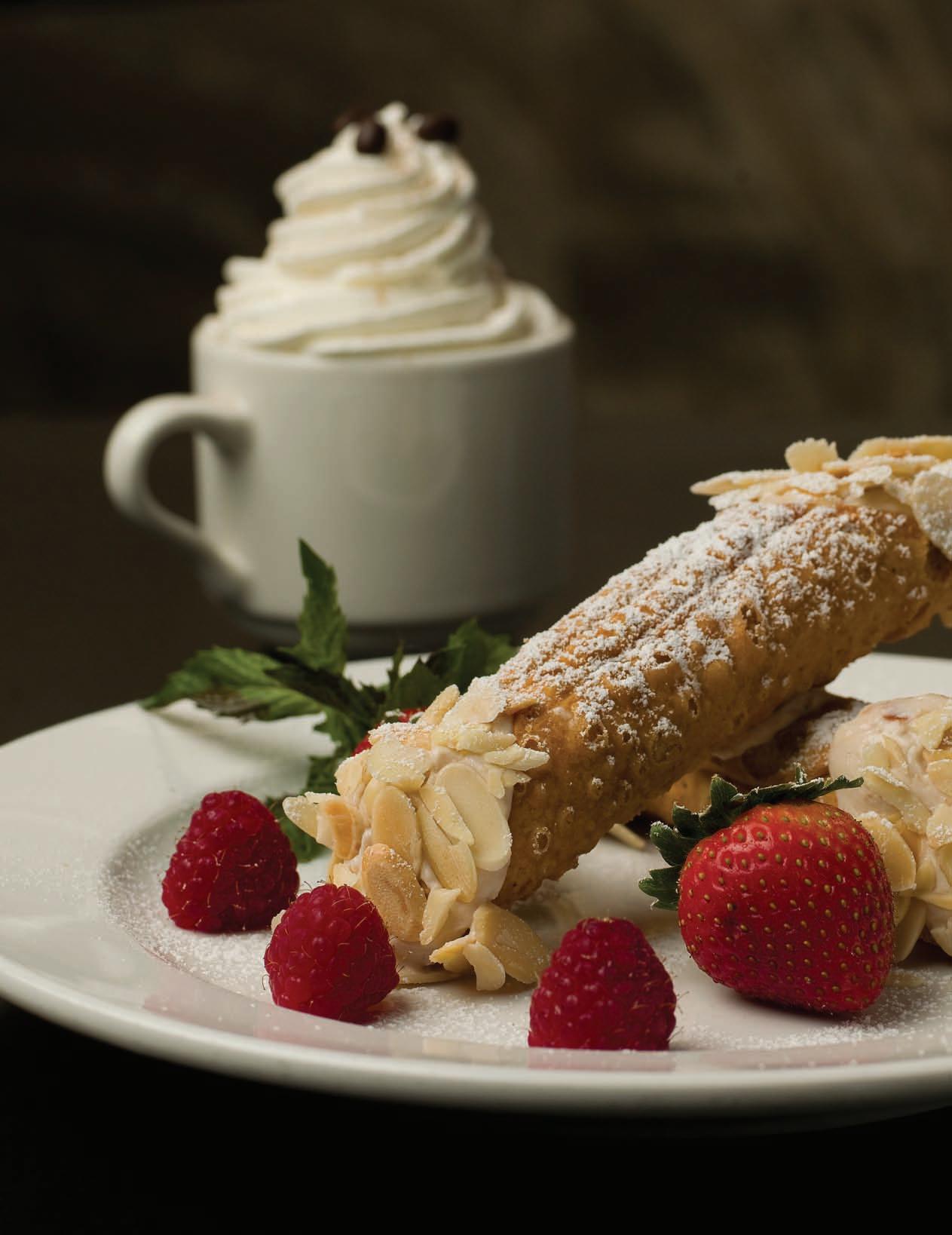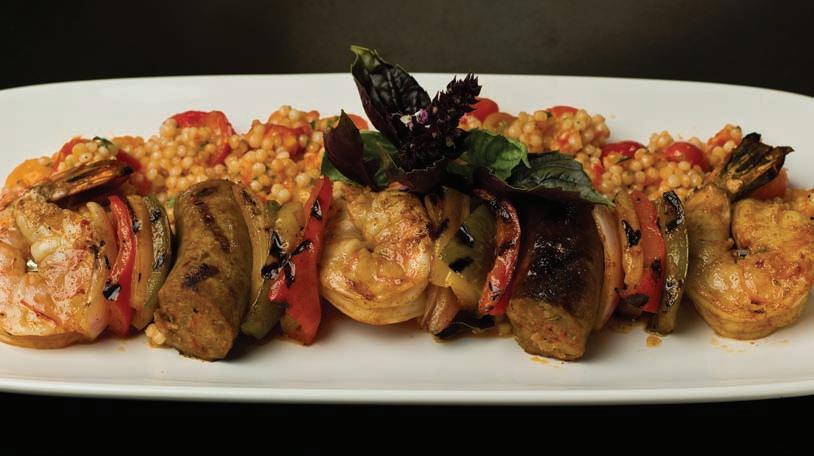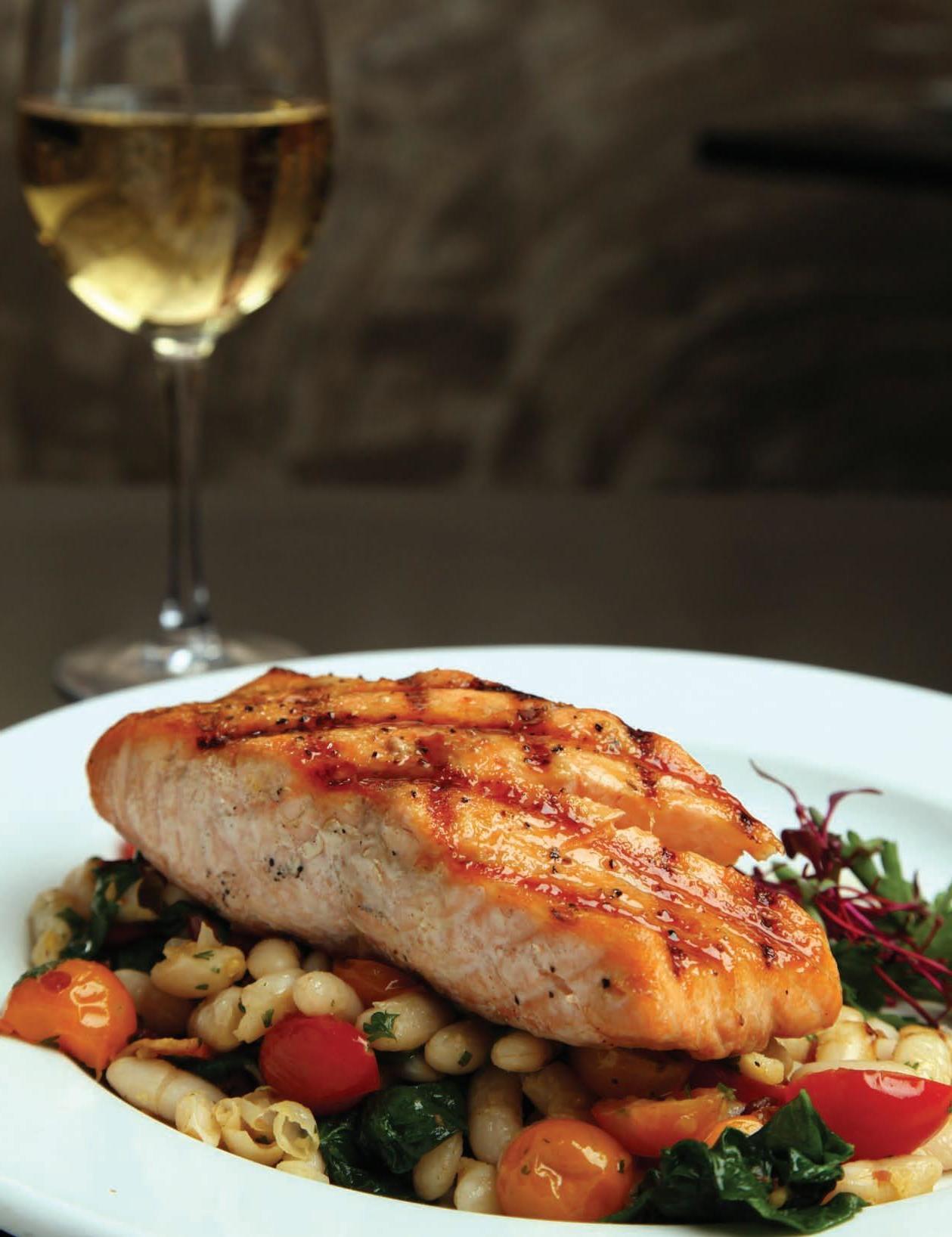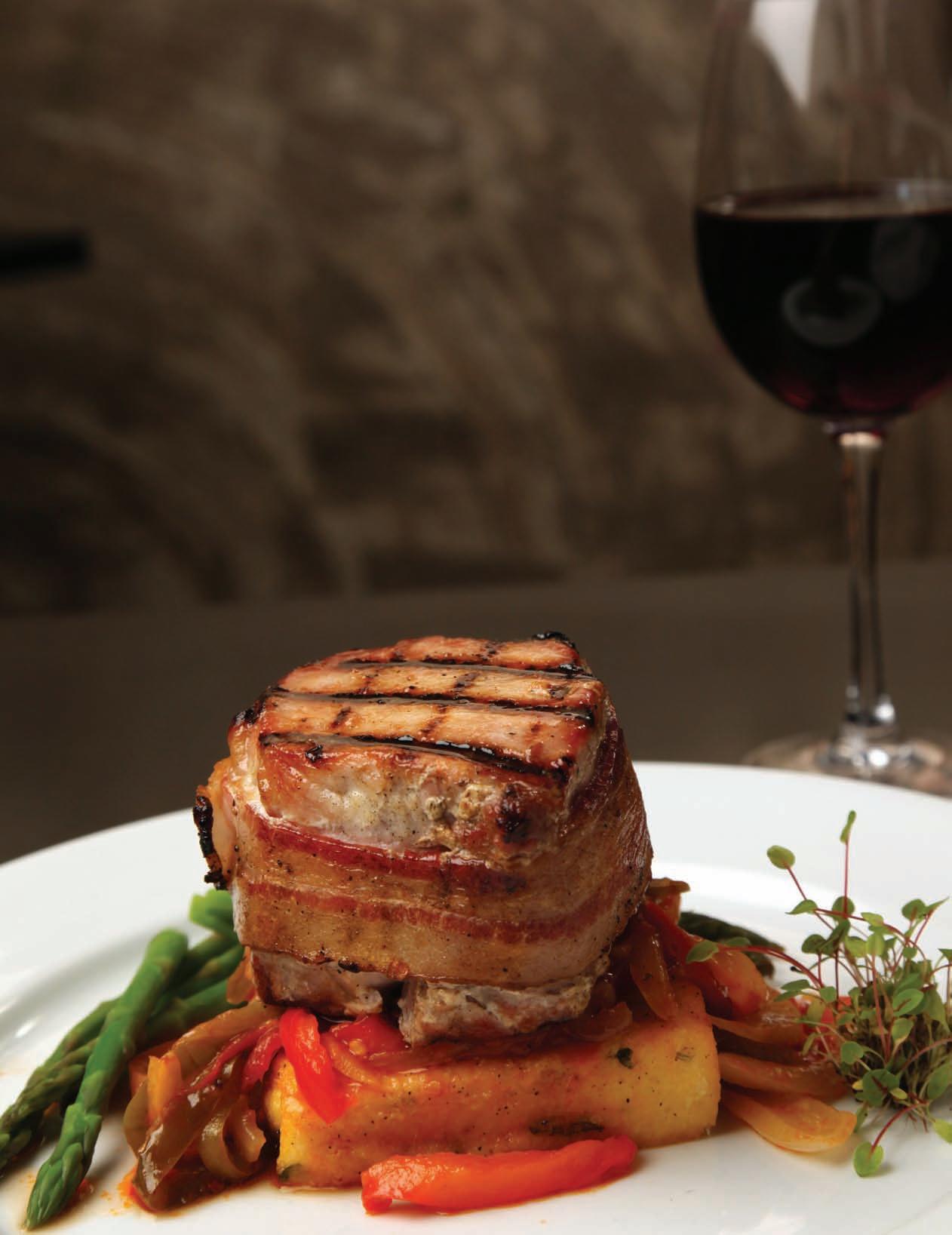
7 minute read
Making History
Kentucky farms conquer a venerable Italian menu
Written by Dr. Matthew Bessen / Photography byEric Williams
Outside the heyday of the imperial Roman legions, the history of the Italian nation has been marked by the foreign armies whose heels have trod the familiar boot-shaped peninsula. But whether it be Hannibal, the Normans, Napoleon or, most recently, the American G.I., I can tell you that the influence of these invaders on Italian culture and civilization is nearly invisible alongside that of the well known culinary invaders who have left their mark on the Italian kitchen.
The tomato came from the new world, the water buffalo (as in buffalo mozzarella) from Asia, and Marco Polo may not have introduced spaghetti to his countrymen, but the Chinese were making noodles centuries before they debuted in Venice. With a history of so many successful cross-pollinations, I should have been prepared for what Ellana and I encountered during an elaborate dinner at Frankfort Avenue’s well-known restaurant, Porcini, where an array of fresh ingredients from the farms of Kentucky have conquered a venerable Italian menu.
The interior at Porcini pays a respectful tribute to the softly illuminated traditional brick-walled Roman trattoria, and although the masonry has the familiar American dimensions, as with its more slender authentic counterpart, dollops of grout playfully spill out to dot the walls with an aura of rustic antiquity. From our intimate table, we looked up into a virtual picket fence of assorted wine bottles circling the main dining area, which I imagine were partly a sound barrier, transforming the conversations of the animated diners to a congenial murmur. Our waiter, Giovanni (really his name, really a Kentucky native), helped proprietor Tim Coury assemble the evening’s menu and had been tasked with suggesting the wine pairings for the courses.

We started with dry white Bolgheri Vermentino, from the region of Livorno, on the Tuscan coast. The accompanying appetizer - summer fare of heirloom tomato slices harvested from Chef John Plymale’s own acreage near Eminence - was extraordinary. Their colorful appellations (Mister Stripy, Pink Lady, Cherokee Purple, Lemon Boy) aptly described the tender discs with vibrant hues of a setting sun and hearty flavors made more savory alongside the light pear and pine of the Vermentino, where each sip pressed an imaginary reset button on the palate.
The cool tomatoes were served with a warm, lightly breaded rectangle of Sapori d’Italia artisan goat cheese that smoothed the other tangy flavors. Sapori d’Italia means “taste of Italy.” In my mind, I hear the words “it ain’t bragging if it’s the truth,” and to make the case for this Lawrenceburg, Kentucky cheesemaker dedicated to recreating the styles of regional Italian cheeses, Giovanni brought us an herb crowned tower of the snowy caciotta with a spicy side of pencil-thin sautéed peppers of red, yellow and green and country-style bread. Ellana said the cheese had an invigorating freshness and Chef John’s homegrown peppers gave the wine a subtle sweetness.
We also sampled a classic Caprese, an Italian flag in miniature featuring a local small farm mozzarella and a bold slice of the chef ’s beefsteak tomato under a broad leaf of basil. Ellana, not much of a salad fan, raved about an offering of ruffles of spring green Kentucky limestone Bibb lettuce wrapped around chunks of avocado, strawberries, and more artisan goat cheese, this time with a mild citrus flavor, dressed with a balsamic vinegar reduction and a bright basil flower. The confectionary mode of the salad married well with a sparkling La Marca prosecco, from the Veneto region. The wine boasted hints of anise and eschewed the fruitiness that often characterizes this beverage.

The medley of hits from the summer garden was reprised in our pasta course: a Basilico wrought from angel hair pasta, roasted garlic, grape tomatoes, spinach, fruity olive oil, and Parmigiano cheese. I took notice that the dish was served properly, in a warmed ceramic bowl, which kept the noodles supple and savory as we lingered over glasses of Chianti (Da Vinci Reserva 2006.) The uncomplicated summer pasta and Tuscan table wine worked together to produce a hearty, earthy, perhaps manly recipe.
Chef John Plymale has been in charge of the Porcini kitchen since its opening 18 years ago. I take this to be a testament of not only skill but also his flexibility and a willingness to explore new opportunities. Aside from telling Ellana and me about the time he tried to tempt proprietor Coury by reporting to him that he had found a spot in Venice where the two could locate a second restaurant, he displayed these qualities to us by offering six different entrees arranged in two “flights” of three selections each. Fit comfortably side by side, Ellana received two large grilled shrimp resting on a rich buttery risotto, a filet of beef cooked to a precise medium-rare coated with an intense mushroom and beef broth glaze, and a sharply grill-marked salmon filet in a honey and blood orange glaze, perched on a sophisticated white bean salad. The beans had the firm texture that signifies freshness and benefitted from combination with bits of prosciutto, tomato, and spinach.
My trio was a veal scallopini in a lemon caper butter sauce flanked on the left by a rack of lamb in Madeira wine sauce, with a seared black surface that gave way to a silky ruby-colored interior, and on the right by a portion of grilled grouper balanced on a creamy cake of polenta and nestled against a wild mushroom compote with roasted shallots and garlic. In keeping with the theme of Kentucky farmers conquering gourmet Italian cuisine, Giovanni told me the mushrooms were produced by Sheltowee Farm of Salt Lick.

Giovanni had the challenge of presenting a wine flight that could satisfy two diners with two different dinners and one set of high expectations. For the fish and shrimp, he offered a familiar name, Ferrari-Carano, but instead of the delicate Carneros chardonnay, it was the Alexander Valley Tre’ Terre. We loved this wine for its unabashed oak and bold fruitiness, the things we loved about chardonnay the first time we tasted it way back when.
For the salmon and veal, the selection was a Marco Cecchini Refosco. This vineyard has championed indigenous grapes from its northern Italian Friuli- Venezia region, and this was my introduction to the Refosco, which had a mixture of wild berry and muted tannins that did not overpower the light fleshed entrees. The hearty choice was a Rosenblum Cellars Heritage Clones 2007 Petite Syrah from Contra Costa County in the San Francisco Bay area. It yielded an impressive mélange of violet, blackberry, and spice to accent the rich lamb and beef tenderloin portions.

In many ways, the Porcini menu takes a reverential approach to constructing the classic Italian meal. Dessert, however, was Chef John’s opportunity to depart from the usual traditions and display his flair for the original. Giovanni was still cautious and started us with a delightful Nivole Muscato d’Asti, a sweet wine from the Piedmont region with a low alcohol content that makes it perfect for dessert. He then brought an astonishing assortment of ices. Arrayed like a traffic signal laid sideways, there was frosty plum colored ball of blood orange ice on top of a grilled slice of the same, a custard color ball or lemon ice, again on a grilled slice of fruit, and last, peach ice on a slice of grilled peach from Bray Orchards of Henry County. The grilling was inspired and added pizzazz to the easygoing fresh fruit taste of the ices.
Another inspiration produced a grand cube of tiramisu with white chocolate, mint, and a whipped cream crown decorated by three chocolate-coated espresso beans. Of course, it tasted as good as it sounds. Last, we confronted a pair of dainty cannoli in an “X” arrangement, each the size of a roll of quarters, with the wrappers composed of almonds rather than the traditional fried dough, and brilliantly garnished with strawberry fans and mint leaves.

Despite a great deal of attention from our hosts, we did let our eyes wander to a white bean, chicken, and fontina pizza served on a miniature wooden peel at a neighboring table. This alone may be sufficient reason for a return visit to Porcini. Until then, we will remember the evening for the way the celebrated style and tradition of Italian cuisine was elevated by the freshest and most sophisticated local produce from Kentucky, or anywhere else.




